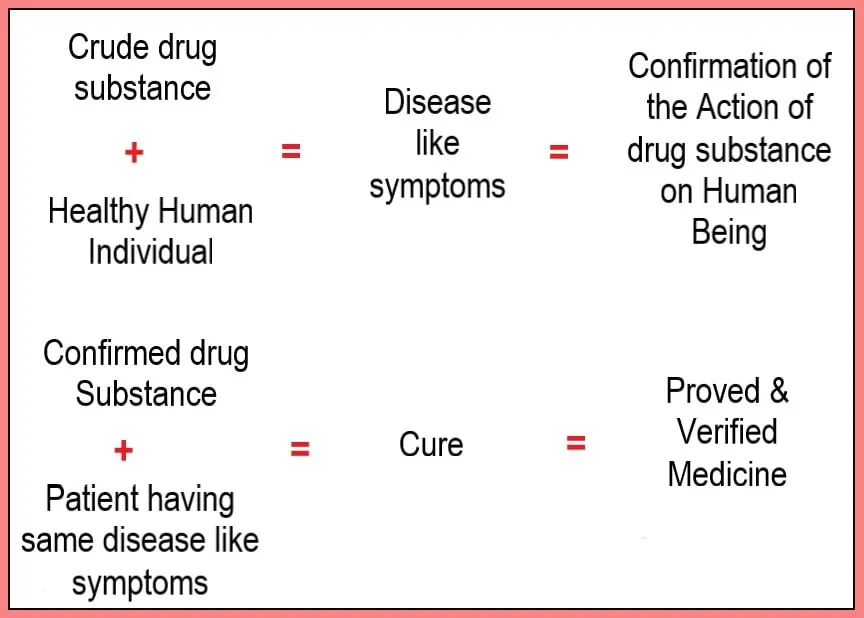This post is about the most important topic Scope and Limitations of Homeopathic Materia medica.
In our previous post “Classification and types of Materia medica” we learnt about the availability of vast variety of Materia medica in homoeopathic system of medicine.
Materia medica is a book that contains systematic records of the medicinal substances.
Homoeopathic Materia medica is the collection of systematic records of homoeopathic remedies which are proved on healthy human beings of both sexes and different ages.
Homoeopathic Materia medica is an encyclopedia of the therapeutic properties of medicinal substances.
Homoeopathic system of medicine is completely based on the scientific and logical experiments, explanations and proving records.
They were written by the doctors after their proving and clinical experiences all over the world.
Every doctor has developed very different style of materia medica.
Vast variety of Materia medica provides a wide range of opportunity in order to learn the remedies in multiple dimension which eventually helps in practicing homoeopathic medicines.
But there are some drawbacks too which we are going to discuss here.
First, we will discuss about the scope of homoeopathic Materia medica.
Table of Contents
ToggleSCOPE OF HOMOEOPATHIC MATERIA MEDICA

The construction of homoeopathic Materia medica is different as compared to Materia medica of other system of medicine (Chinese, ayurvedic, allopathic etc).
1. HOLISTIC APPROACH
- Philosophical meaning of holistic is the belief that the parts of something are intimately interconnected and explained only as a whole.
- In medicine it means that the treatment of the whole person considering mental, physical and social factors, rather than just the symptoms of a disease.
- Homoeopathic system is based on the holistic and individualistic approach.
- This approach is also found in homoeopathic Materia medica.
2. PROVING ON HUMAN BEINGS
- Complete and essential knowledge of the action of drug substances can be obtained only if they are proved on human beings.
- Homoeopathic medicinal substances are proved on healthy human beings.
- This type of proving is not found in other systems of medicine.
3. COLLECTION OF SUBJECTIVE SYMPTOMS
- Subjective symptoms are those symptoms which are felt by the patient himself.
- Homoeopathic Materia medica is filled with such symptoms after proving on healthy humans.
- This helps while attending the cases in clinics because patients usually narrate their subjective symptoms.
Note: If drugs are proved upon lower animals like mice, rabbits, guinea pigs etc. we can obtain only objective symptoms.
4. ACCURACY AND RATIONALITY OF SYMPTOMS
- All the symptoms in each Materia medica are actually proved on healthy human beings of both sexes and different ages.
- Even some of the Materia medica are recorded without modification in prover’s sensation (subjective symptoms).
- They are written in the words of the provers along with date, time, name, age, sex, doses and duration of experiments.
- Even the sequence of the appearance of symptoms are maintained.
- So, authenticity of the symptoms of homoeopathic Materia medica is precise.
5. VERIFIED AND CONFIRMED SYMPTOMS
- Though homoeopathic Materia medica are filled with the symptoms obtained from healthy provers, they are written only after the confirmation by reproving and verification on sick individuals.
- This means proved medicines are used on sick individuals, if they get cured by proved medicine only then it is considered to be verified.

6. LARGE NUMBER OF MEDICINES AND SYMPTOMS
- Homoeopathic Materia medica contains very extensive number of medicines with wide range of symptoms.
- This quality of it makes it possible to select most similar medicine for each individual case.
7. SELECTION OF EXACT SIMILIMUM
- Homoeopathic medicines are selected on the basis of exact sensation, location, modalities and concomitants found in the proved remedies.
- Due to the extensive range of symptoms it becomes possible to find most similar medicine to the patient’s symptom totality based on his individualizing characteristics.
8. EASY TO RELATE THE REMEDIES WITH OTHERS
- We can relate two or more medicines by studying Materia medica.
- We can compare whether they are similar, antidote, complementary, follows well, etc. with other homoeopathic remedies.
9. IMPROVES KNOWLEDGE OF DRUG PATHOGENESIS
- Pathogenesis means the study of biological mechanisms which leads to the state of disease.
- Drug pathogenesis means development of diseased symptoms by drugs.
- Without the knowledge of the effect of drug substances on healthy human beings, it is not logical to prescribe it upon diseased human beings for curative purposes.
10. EVALUATION OF MIASM BECOMES EASY
- Miasms are nothing but the classification according to the pathogenesis of diseases.
- Due to vast collection of proved clinical records, homoeopathic Materia medica comes handy in order to evaluate the underlying Miasmatic background.
11. HELPS WHILE CASE TAKING
- Due to wide variety of subjective symptoms and modalities of the symptoms, we can collect most accurate symptoms from patients.
- Because we can formulate the questions with the knowledge of extended variety of symptoms.
12. CAN FIND SUITABLE PROPHYLACTIC REMEDY
- We can select a homoeopathic prophylactic remedy suitable for individual patient with the help of Materia medica by studying person’s temperament, diathesis, predisposing factors etc.
SUMMARY
- HOLISTIC APPROACH
- PROVING ON HUMAN BEINGS
- COLLECTION OF SUBJECTIVE SYMPTOMS
- ACCURACY AND RATIONALITY OF SYMPTOMS
- VERIFIED AND CONFIRMED SYMPTOMS
- LARGE NUMBER OF MEDICINES AND SYMPTOMS
- SELECTION OF EXACT SIMILIMUM
- EASY TO RELATE THE REMEDIES WITH OTHERS
- IMPROVES KNOWLEDGE OF DRUG PATHOGENESIS
- EVALUATION OF MIASM BECOMES EASY
- HELPS WHILE CASE TAKING
- CAN FIND SUITABLE PROPHYLACTIC REMEDY
LIMITATIONS OF HOMOEOPATHIC MATERIA MEDICA

No medicinal system is complete and homoeopathy is of no exception.
As we have discussed the utilities of homoeopathic Materia medica, there are some limitations too.
Let’s discuss them in detail.
1. NO PROVING RECORDS OF PATHOLOGICAL CHANGES
- During drug proving, the drugs were withdrawn before any pathological or organic changes took place.
- The altered symptomatology recorded are purely functional.
- So, proving records for pathological changes are not found in homoeopathic Materia medica.
- But very often many homoeopathic physicians come across the advanced pathological cases like irritable bowel syndrome, tumours, hemiplegia etc. and gets positive results of cure by homoeopathic remedies.
- The pathological symptoms are collected from clinical practice after being cured or from poisoning cases only.
- Homoeopathic Materia medica have no proved records of drugs applied to such an extent (high potency for prolonged time with susceptible provers) to produce pathological changes.
- So, homeopaths need to be depended upon only on clinical symptoms for prescribing in such cases and diseases with advanced pathological changes cannot be treated as effectively.
2. LACK OF SYMPTOMS PROVED ON FEMALE
- Due to a smaller number of female volunteers at the time of Hahnemann, symptoms collection from female provers is comparatively less.
3. LACK OF RELIABILITY IN PROVINGS
- Many provers who voluntarily participated in homoeopathic drug proving were non-medical persons.
- So, sometimes it is possible that important symptoms may get neglected by provers unknowingly.
4. LACK OF OBJECTIVE SYMPTOMS
- Homoeopathic Materia medica is filled with the subjective symptoms.
- Objective symptoms are those which can be perceived by others than the patient such as pallor, rapidness of pulse, rapid or shallow respiration etc.
- Objective symptoms can be evident for the disease diagnosis.
- Homoeopathic Materia medica do not have an extensive range of objective symptoms.
- Even till date there is no provision in homoeopathy to have regular proving on lower animals.
5. LIMITATIONS FOR EMERGENCY CASES
- Homoeopathic Materia medica have limited scope for acute emergency cases like congestive cardiac failure, shock, accidental cases, etc.
6. LIMITATIONS FOR SURGICAL CASES
- There are no dependable homoeopathic specific medicines for anaesthesia, preventive, pre-operative, or post-operative changes etc. available.
- So, homoeopathy has very little scope in the field of surgery, anaesthesia, contraception, drug induced abortion etc.
7. NO COMPLETE HOMOEOPATHIC MATERIA MEDICA
- No Materia medica is complete which contains all the information about all the remedies.
8. PARTIALLY PROVED REMEDIES
- Many homoeopathic medicines in Materia medica are proved partially which are known as rare medicines.
- Utilization of them is difficult due to lack of verified records.
9. DIFFICULTY TO REMEMBER ALL THE SYMPTOMS
- Vast number of medicinal symptoms makes it difficult for human brain to recall all of them.
SUMMARY
- NO PROVING RECORDS OF PATHOLOGICAL CHANGES
- LACK OF SYMPTOMS PROVED ON FEMALE
- LACK OF RELIABILITY IN PROVINGS
- LACK OF OBJECTIVE SYMPTOMS
- LIMITATIONS FOR EMERGENCY CASES
- LIMITATIONS FOR SURGICAL CASES
- NO COMPLETE HOMOEOPATHIC MATERIA MEDICA
- PARTIALLY PROVED REMEDIES
- DIFFICULTY TO REMEMBER ALL THE SYMPTOMS

Really helpful and informative
It’s too helpful thanks:)
Good
Really helpful
Fabulous